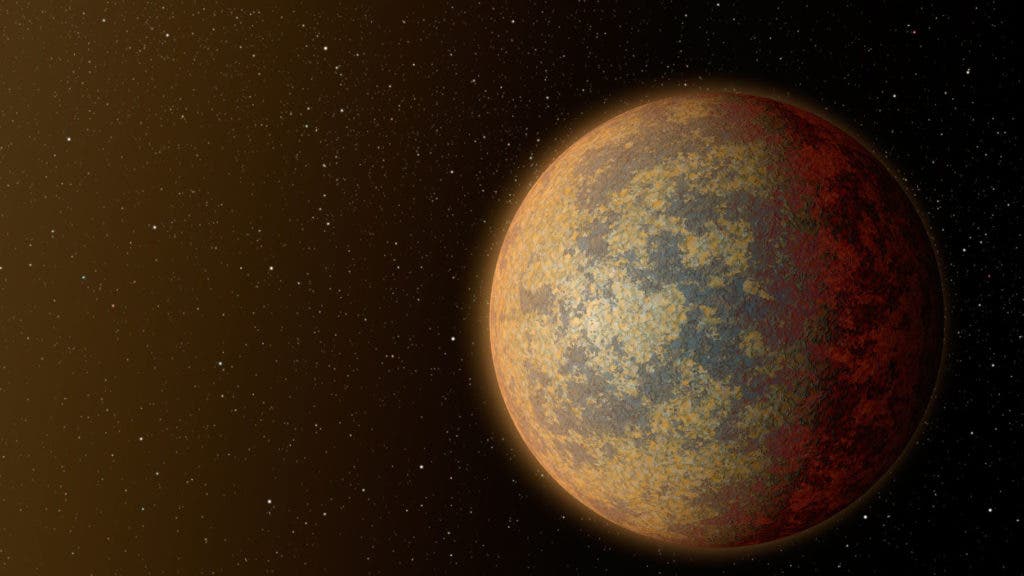New Spitzer telescope observations reveal that a nearby rocky exoplanet doesn’t have an atmosphere.

Image credits NASA / JPL-Caltech.
Christened LHS 3844b, the exoplanet is 1.3 times larger than our planet, orbits its star in 11 hours, and — as confirmed by this study — is also telluric (rocky) in make-up. However, don’t start packing just yet: LHS 3844b seems to be very hot and lacking in atmosphere — literally and figuratively.
No (air) pressure
A new study reports that exoplanets like LHS 3844b — hot, rocky planets orbiting small stars — do not retain substantial atmospheres, or any atmosphere at all.
Most known rocky exoplanets orbit around stars that have 60% or less of the diameter of the Sun (i.e. dwarf stars). Past research has predicted that such planets don’t retain an atmosphere, however, this has yet to be proven or disproven. Researchers are especially interested in finding rocky exoplanets with atmospheres as they are prime candidates for both extraterrestrial life and potential future homes in space.
LHS 3844b does not appear to have an atmosphere, according to observations reported in Nature this week. LHS 3844 b is an extrasolar planet (exoplanet) located 48 light years away from Earth in the constellation Indus. It orbits a red dwarf star named LHS 3844, and was one of the first exoplanets discovered by the Transiting Exoplanet Survey Satellite (TESS).
It goes about its merry way just 0.06839 AU (1 AU, or ‘astronomical unit’ is roughly equal to the distance between the Earth and Sun) away from the star, which is extremely close.
The team, led by Laura Kreidberg from the Harvard & Smithsonian Center for Astrophysics in Cambridge, Massachusetts, analyzed 100 hours’ worth of observations by the Spitzer telescope in search of an atmosphere and other defining features on LHS 3844b.
Their efforts revealed that LHS 3844b is a hot, rocky planet (confirming a previous hypothesis), with a surface similar to that of Mercury. Heat-distribution and chemical-composition modelling suggest that it doesn’t have a thick atmosphere, which was likely stripped away by radiation from its host dwarf star. The team says its likely that LHS 3844b completely lacks any atmospheric cover at all, as it’s doubtful even a thin atmosphere could persist under the expected conditions on the planet.
In other words, LHS 3844b is probably a bare chunk of rock.
However, all of you hoping to find our home away from home, fret not. We’ve found a lot of other exoplanets so far, all of which NASA conveniently put together in this map. Some of them are bound to have atmospheres and conditions that would support life as we know it. And, perhaps even more excitingly, some of them might harbor their own takes on life.
Until we find a way to get there, telescope observations are our best way to sieve those few special ones from the lot.
The paper “Absence of a thick atmosphere on the terrestrial exoplanet LHS 3844b” has been published in the journal Nature.






